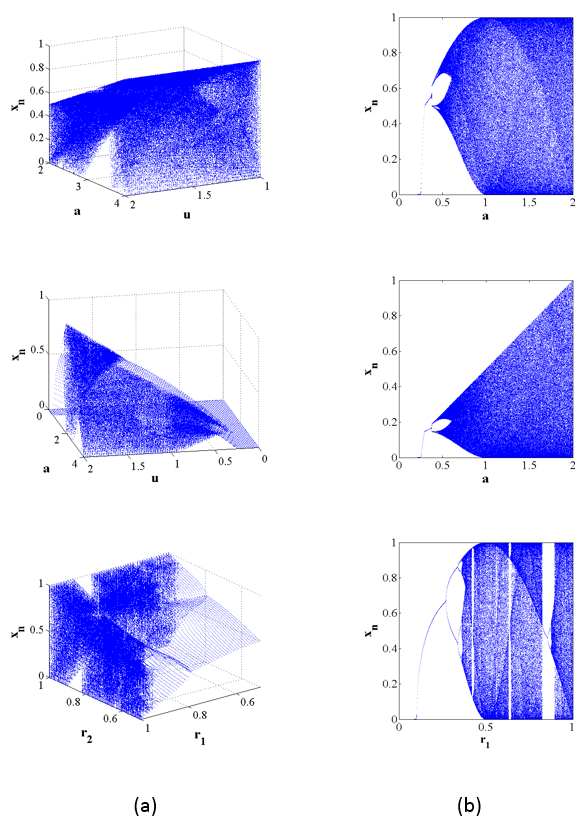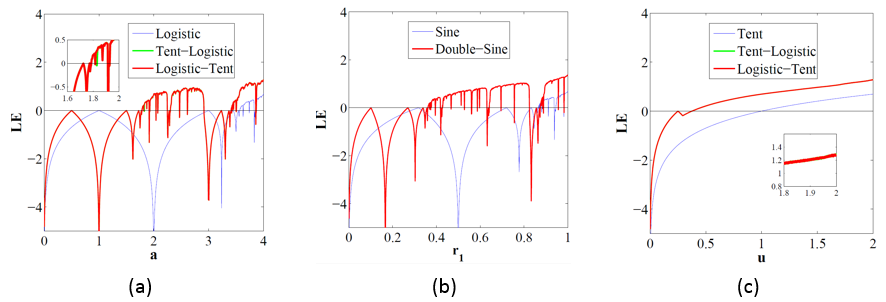Cascade Chaotic System
Introduction
Chaotic maps are widely used in different applications. Motivated by the cascade structure in electronic circuits, this paper introduces a general chaotic framework called the cascade chaotic system (CCS). Using two one-dimensional chaotic maps as seed maps, CCS is able to generate a huge number of new chaotic maps. Examples and evaluations show the CCS’s robustness. Compared with corresponding seed maps, newly generated chaotic maps are more unpredictable and have better chaotic performance, more parameters and complex chaotic properties. To investigate applications of CCS, we introduce a pseudo-random number generator (PRNG) and a data encryption system using a chaotic map generated by CCS. Simulation and analysis demonstrate that the proposed PRNG has high quality of randomness and that the data encryption system is able to protect different types of data with a high security level.
New cascade chaotic system
Figure 1 shows the structure of the CCS, where G(x) and F(x) are two seed chaotic maps. The CCS connects two seed maps in series. The output of G(x) is fed into the F(x)’s input, and the F(x)’s output is then fed back into the G(x)’s input for recursive iterations. In hardware implementation, a compensation circuit may be required in the feedback path to eliminate the time delay in the cascade connection of G(x) and F(x).
 |
| Figure 1. The structure of CCS. |
Figure 2 shows the 2D and 3D bifurcation diagrams of the new chaotic maps.
 |
| Figure 2. Bifurcation diagrams of three new chaotic maps. The first, second and third rows show the (a) 2D and (b) 1D bifurcation diagrams. |
Performance
Figure 3 plots the Lypunov exponent (LE) comparsions between nre chaotic maps with existing maps. A positive LE value of a dynamical system indicates that the trajectories of its two output sequences generated from extremely close initial inputs diverge dramatically in each iteration. The bigger positive LE values indicates faster divergences of the trajectories of outputs, and thus better chaotic performance. One can observe that, under the same parameter settings, NCMs have larger LE values than their corresponding seed maps in most parameter ranges. Even the Tent-Logistic and Logistic-Tent maps are two chaotic maps with different definitions and trajectories, they have similar chaotic characteristics due to the fact that they are derived from the same seed maps and that their LE distributions are similar.
 |
| Figure 3. LE comparison of (a) the Logistic, Tent-Logistic and Logistic-Tent maps; (b) the Tent, Tent-Logistic and Logistic-Tent maps; and (c) the Sine and Double-Sine maps, respectively. |